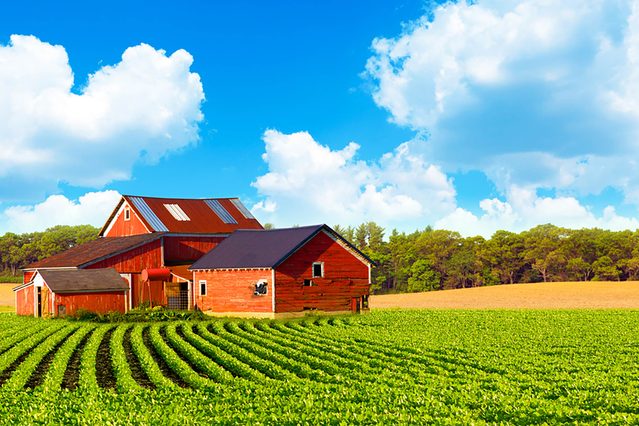There’s a Scientific Reason Why Barns Are Painted Red
Updated: Apr. 21, 2024
Hint: It has to do with the stars.

It’s a constant whether you’re a corn husker or a cranberry bogger. It’s a staple for the road-tripper traversing the U.S. from East to West, North to South. It’s distinctively identical pretty much wherever you go: the red barn.
Why, exactly, is this the case? Is it the work of some massive, red paint monopoly dominating the rural landscape? Is it some sort of broader barn conspiracy involving the exclusion of other hue-users, turning them into paint pariahs? Is red paint just the cheapest available option?
The answer to each of the above questions, in order: No, no, and yes.
But this isn’t a trend which is based on surpluses and fire sales. Barns of all ages remain red because it has always been the cheapest paint, and will always remain the cheapest paint. The reason for this eternal discount isn’t found in the manufacturing plant, however. It’s found in the cosmos.
Yonatan Zunger, a Google employee, explains that the abundance of red paint can be credited to stars on the brink of collapse:
“The only thing holding the star up was the energy of the fusion reactions, so as power levels go down, the star starts to shrink. And as it shrinks, the pressure goes up, and the temperature goes up until suddenly it hits a temperature where a new reaction can get started. These new reactions give it a big burst of energy, but start to form heavier elements still, and so the cycle gradually repeats, with the star reacting further and further up the periodic table, producing more and more heavy elements as it goes. Until it hits 56. At that point, the reactions simply stop producing energy at all; the star shuts down and collapses without stopping.”
So basically, a star is dying and continues to degrade and in turn, create. It creates elements from 1 to 56 on the periodic table, then stalls out at 56, pushing itself, but holding steady right there until it collapses. The stalling means that the star spends the most time creating matter with 56 nucleons, and it just so happens that Iron has 56 nucleons.
And go figure, Iron is a primary component in Fe2O3, or red ochre, the chemical which makes red paint red.
Now here comes the real question. What do you call a large, iron, circular carnival attraction which is painted with barn paint?
A ferrous ferrous Ferris Wheel.
Source: Smithsonian